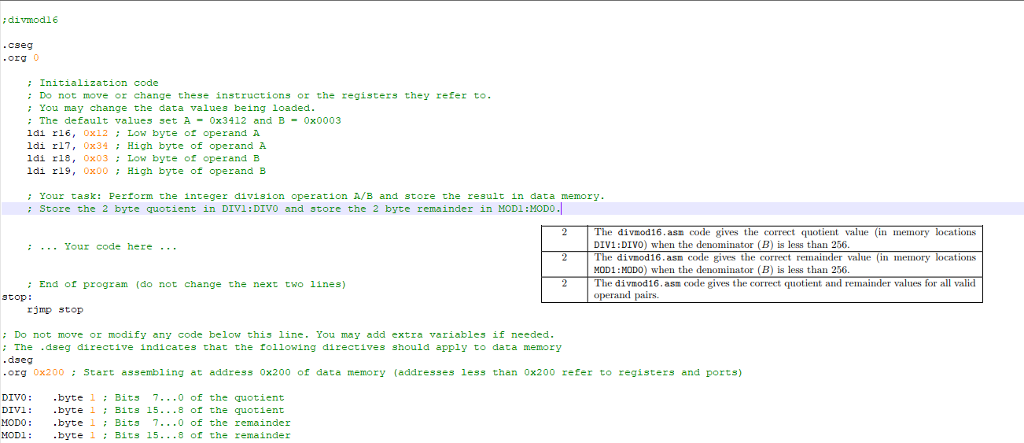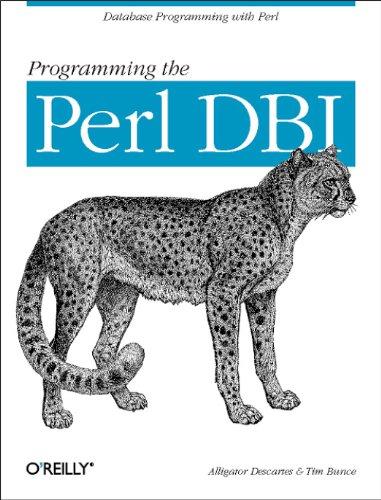Question
AVR language code. Let A and B be 16-bit unsigned integers. The product AB requires at most 32 bits. The quotient A/B and remainder A%B
AVR language code. Let A and B be 16-bit unsigned integers. The product AB requires at most 32 bits. The quotient A/B and remainder A%B each require at most 16 bits.
Modify the program to compute the quotient A/B and remainder A%B and store each value in memory as a 16-bit little-endian unsigned integer.
For the 16-bit input operands A and B are pre-loaded into two pairs of registers (R17:R16 for A and R19:R18 for B). Do not modify the ldi commands as they are already pre loaded.
Here is the code for reference
;divmod16
.cseg
.org 0
; Initialization code
; Do not move or change these instructions or the registers they refer to.
; You may change the data values being loaded.
; The default values set A = 0x3412 and B = 0x0003
ldi r16, 0x12 ; Low byte of operand A
ldi r17, 0x34 ; High byte of operand A
ldi r18, 0x03 ; Low byte of operand B
ldi r19, 0x00 ; High byte of operand B
; Your task: Perform the integer division operation A/B and store the result in data memory.
; Store the 2 byte quotient in DIV1:DIV0 and store the 2 byte remainder in MOD1:MOD0.
; ... Your code here ...
; End of program (do not change the next two lines)
stop:
rjmp stop
; Do not move or modify any code below this line. You may add extra variables if needed.
; The .dseg directive indicates that the following directives should apply to data memory
.dseg
.org 0x200 ; Start assembling at address 0x200 of data memory (addresses less than 0x200 refer to registers and ports)
DIV0: .byte 1 ; Bits 7...0 of the quotient
DIV1: .byte 1 ; Bits 15...8 of the quotient
MOD0: .byte 1 ; Bits 7...0 of the remainder
MOD1: .byte 1 ; Bits 15...8 of the remainder

Step by Step Solution
There are 3 Steps involved in it
Step: 1

Get Instant Access to Expert-Tailored Solutions
See step-by-step solutions with expert insights and AI powered tools for academic success
Step: 2

Step: 3

Ace Your Homework with AI
Get the answers you need in no time with our AI-driven, step-by-step assistance
Get Started


